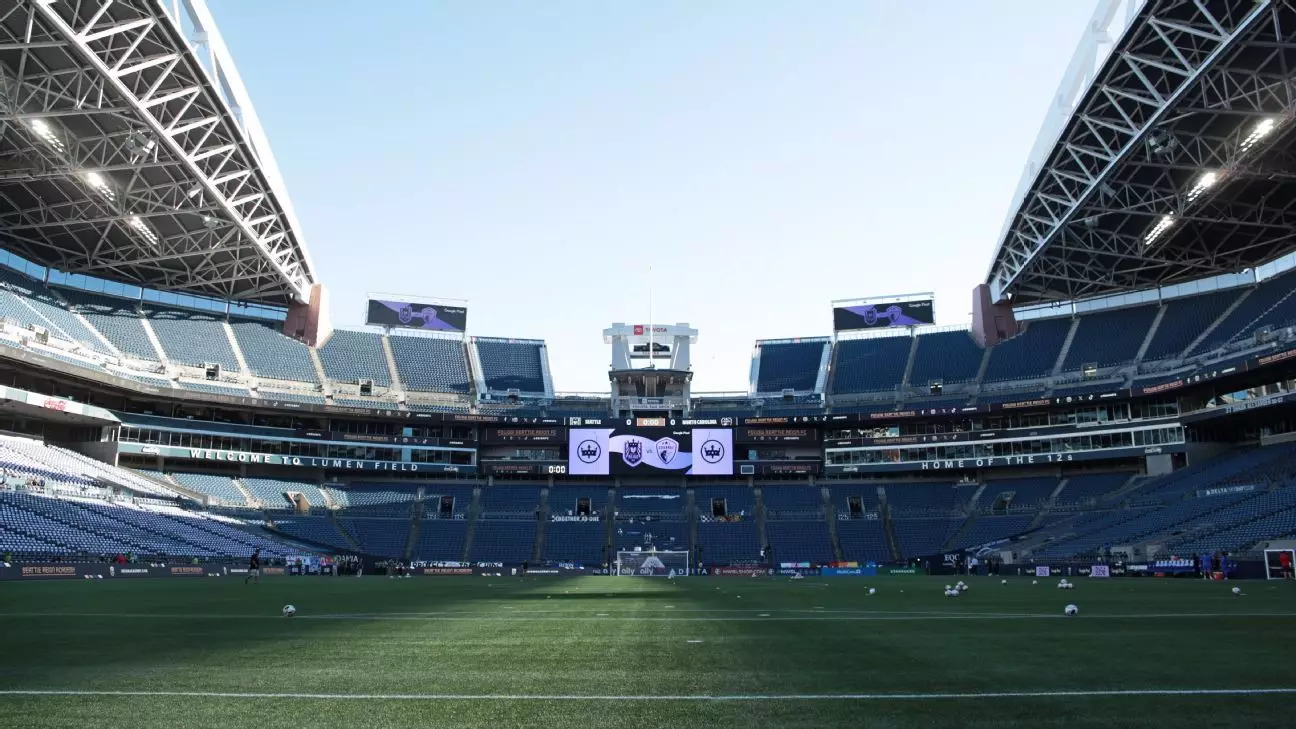With the 2026 FIFA Men’s World Cup on the horizon, the National Women’s Soccer League (NWSL) finds itself at a crossroads. As the world’s attention shifts to one of the largest global sporting events, NWSL Commissioner Jessica Berman conveyed the ambitious plan to keep the league operational during this high-profile tournament. This decision not only symbolizes a commitment to women’s sports but also speaks volumes about Berman’s vision for the future of the NWSL amidst unprecedented challenges.
Football fans around the globe will have their eyes trained on the thrilling matches unfolding from June 11 to July 19, 2026. As the largest World Cup yet, featuring an expanded roster of 48 teams and co-hosted by the United States, Canada, and Mexico, the tournament demands significant infrastructural adjustments. Nevertheless, Berman’s insistence that the NWSL will not “shut down” amid this whirlwind reflects a bold stance that prioritizes the league’s continuous growth and presence.
Challenges in Collaboration: The Impact of FIFA Regulations
The complexities of scheduling amidst the World Cup cannot be understated. Four NWSL teams — the Houston Dash, Kansas City Current, Racing Louisville FC, and Utah Royals FC — face significant disruptions as their training grounds are designated as official team camps by FIFA. The stringent regulations not only limit these teams’ operational capabilities but also pose a logistical nightmare with implications that could ripple throughout the entire season.
The exclusive use periods mandated by FIFA further exacerbate the situation. With stadiums and training facilities unavailable for weeks, teams are left scrambling to secure alternative venues, all while maintaining competitive performance and team cohesion. The struggles of Racing Louisville, forced to shift training sites due to external factors, underscore this reality. Such challenges heighten the importance of strategic relationships within local sports facilities and partnerships, showcasing how NWSL must adapt and innovate to thrive.
Resilience Through Adaptation
Despite these obstacles, Jessica Berman remains optimistic, asserting that “everything’s on the table” as the league devises plans for next summer. This adaptable mindset is essential for a league known for its resilience in the face of adversity. Rather than viewing the situation as a hindrance, the NWSL appears poised to leverage these challenges as opportunities to enhance fan engagement, spotlight athletes, and build momentum in an already-growing sports landscape.
Moreover, the potential for friendly matches and crossover competitions brings an element of excitement for fans and players alike. Historically, the NWSL has been agile in adjusting to global events, such as the Olympics – an experience that, albeit fraught with difficulties, offers valuable lessons in strategic planning and promotional endeavors.
This approach also invites comparisons with Major League Soccer (MLS), which has chosen to pause entirely during the World Cup. While MLS’s decision might stem from protecting team rosters and ensuring national team representation, the NWSL’s readiness to continue play reflects a different philosophy: an affirmation that women’s soccer deserves its own spotlight, even amidst the men’s tournament.
Strengthening Women’s Presence in Sports
The NWSL’s adaptation strategy is noteworthy not only as a reaction to the immediate circumstances surrounding the World Cup, but also as a long-term vision for women’s sports. The steadfast support for expanding the Women’s World Cup to 48 teams by 2031, as expressed by U.S. Soccer CEO JT Batson, speaks volumes about the changing dynamics of women’s soccer on the global stage. The NWSL can leverage positive sentiment surrounding increased visibility and investment in women’s sports to cultivate an environment where women’s teams can thrive parallel to their male counterparts, creating a more inclusive and exciting footballing world.
Berman’s foresight in navigating the unpredictable environment of this period, coupled with proactive strategies, situates the NWSL as a forward-thinking leader in the sports industry. By continuing to maintain a robust schedule during a time that traditionally diverts focus elsewhere, the NWSL reshapes the narrative around women’s football, advocating for its place not only in the market but in the cultural consciousness.
As the 2026 World Cup draws nearer, it will be fascinating to observe how these evolving strategies manifest and influence both the league and its stakeholders. With growing international interest and increasing competition, the NWSL could very well emerge from this unique moment more galvanized and energized than ever before.

